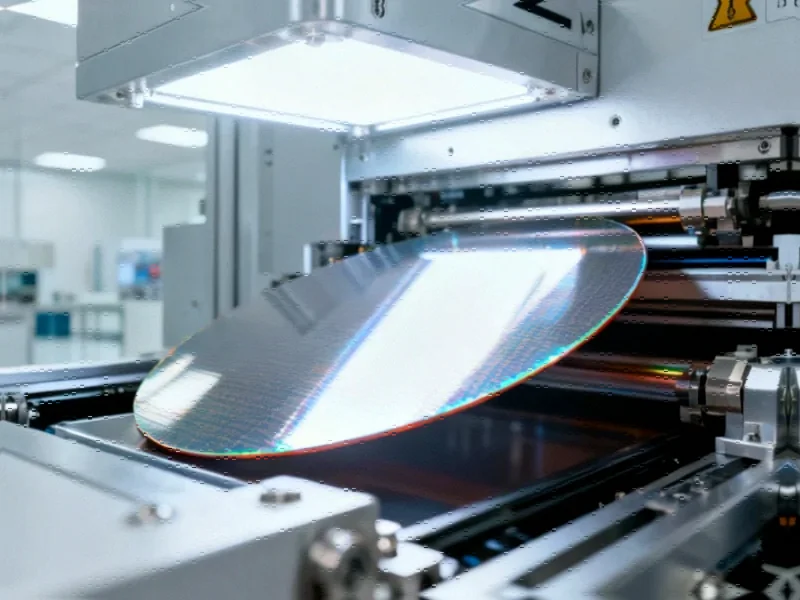Nvidia and TSMC Achieve Manufacturing Milestone on American Soil
In a landmark development for the semiconductor industry, Nvidia has revealed the first Blackwell wafer manufactured entirely within the United States through its partnership with TSMC Arizona. This achievement represents not just a technological breakthrough but a significant strategic shift in global manufacturing patterns. The production took place at TSMC’s advanced fabrication facility in Arizona, marking the first time in recent history that what Nvidia calls “the single most important chip” has been manufactured on US soil using cutting-edge fabrication technology.
Jensen Huang, Nvidia’s CEO, personally signed the historic wafer and emphasized the broader implications during the unveiling ceremony. “This is the vision of President Trump of reindustrialization—to bring back manufacturing to America, to create jobs, of course, but also, this is the single most vital manufacturing industry and the most important technology industry in the world,” Huang stated, acknowledging the political and economic context surrounding this achievement.
Geopolitical and Economic Drivers Behind US Semiconductor Reshoring
The successful production of the Blackwell chip in the United States didn’t occur in a vacuum. It comes amid increasing tariff pressures and geopolitical tensions that have made offshore manufacturing less attractive for critical technologies. The previous administration’s emphasis on bringing production back to American soil, combined with current bipartisan support for semiconductor independence, has created a favorable environment for such initiatives.
This manufacturing shift aligns with broader market trends toward securing supply chains for essential components. As global competition intensifies, the ability to produce advanced semiconductors domestically becomes increasingly crucial for national security and economic competitiveness. Recent industry developments in technology security further highlight why controlling the manufacturing process matters.
Technical and Strategic Implications for AI Leadership
The Blackwell architecture represents Nvidia’s most advanced computing platform to date, specifically designed to power the next generation of artificial intelligence applications. By manufacturing these chips within the United States, Nvidia potentially secures advantages beyond simple geographic convenience. The company claims this move paves the way for “sustained American leadership in artificial intelligence,” suggesting that control over the manufacturing process could accelerate innovation cycles and provide strategic advantages in the global AI race.
Ray Chuang, CEO of TSMC Arizona, highlighted the significance of the timeline: “To go from arriving in Arizona to delivering the first U.S.-made NVIDIA Blackwell chip in just a few short years represents the very best of TSMC.” This rapid scaling demonstrates how strategic partnerships can overcome traditional manufacturing challenges. The achievement builds on related innovations in STEM fields that have been developing over the past decade.
Broader Industry Impact and Competitive Landscape
Nvidia’s US manufacturing milestone comes at a pivotal moment in the semiconductor industry. As companies like AMD continue to advance their own architectures—with claims of potentially outperforming Blackwell—the geographic location of production becomes an additional competitive factor. The ability to produce advanced chips domestically may provide supply chain resilience that translates into market advantages.
The implications extend beyond just Nvidia and TSMC. This achievement could catalyze further investment in US semiconductor manufacturing infrastructure, creating a virtuous cycle of innovation and production capability. As we’ve seen with recent technology deployments, rapid response capabilities often depend on having manufacturing closer to end markets.
Future Outlook for US Semiconductor Manufacturing
The successful production of the Blackwell chip in Arizona represents more than just a single manufacturing achievement—it signals a potential renaissance for American semiconductor manufacturing. If this model proves successful, it could encourage other chip designers and manufacturers to reconsider their global production strategies. The partnership demonstrates that advanced semiconductor manufacturing can thrive in the United States with the right combination of corporate commitment and supportive policy frameworks.
This development intersects with multiple technology sectors, including emerging areas like broadcast partnerships that demand increasing computational power. Even fields like medical technology stand to benefit from more resilient semiconductor supply chains. For those interested in the complete technical details, the full story of this manufacturing breakthrough provides additional context about the engineering achievements involved.
The successful onshoring of Blackwell chip production represents a significant test case for whether advanced semiconductor manufacturing can return to the United States at scale. While challenges remain in building a complete domestic semiconductor ecosystem, this achievement marks a crucial step toward reducing dependency on overseas manufacturing for critical technologies.
This article aggregates information from publicly available sources. All trademarks and copyrights belong to their respective owners.
Note: Featured image is for illustrative purposes only and does not represent any specific product, service, or entity mentioned in this article.



